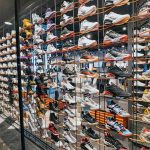U.S. travel and tourism spending surged this summer as Americans took advantage of cheaper gas prices and an improving economy to hit the road, according to figures released Wednesday by the U.S. Department of Commerce.
Real spending (output) on travel and tourism accelerated in the second quarter of 2015, increasing at an annual rate of 6.5 percent after increasing 2.2 percent (revised) in the first quarter of 2015, according to the Bureau of Economic Analysis at the U.S. Department of Commerce.
It marked the biggest quarter-to-quarter growth in travel and tourism spending since the third quarter of 2013, when such spending grew 6.6 percent.
Real gross domestic product (GDP) also accelerated, increasing 3.7 percent (second estimate) in the second quarter after increasing 0.6 percent.
The leading contributors to the acceleration in the second quarter were “traveler accommodations” and “passenger air transportation.” Real spending on “traveler accommodations” accelerated, increasing 13.2 percent in the second quarter after increasing 3.5 percent (revised) in the first quarter, partly reflecting higher hotel occupancy rates. Real spending on “passenger air transportation” increased 11.6 percent, after increasing 2.5 percent, reflecting increased capacity and decreasing fares.
Spending on “recreation, entertainment, and shopping” reached an estimated $220.3 billion in chained 2009 dollars, an increase of 3.9 percent compared to the first quarter, when such spending dipped 0.2 percent following a 6.8 percent surge in the fourth quarter of 2014.
Price growth for travel and tourism goods and services turned up in the second quarter of 2015, increasing 1.0 percent following a decrease of 8.7 percent (revised) in the first quarter.
The upturn was mainly attributable to an upturn in prices for “all other transportation-related commodities,” which includes gasoline. This commodity group increased 16.5 percent in the second quarter after decreasing 34.0 percent in the first quarter. “Traveler accommodations” turned down in the second quarter, partially offsetting the upturn in prices for “all other transportation-related commodities.”
The effect has since been largely reversed. In early September, U.S. gasoline prices reached their lowest level in 11 years in some parts of the country, prompting the American Automobile Association to forecast a third consecutive year of growth in Labor Day travel.















